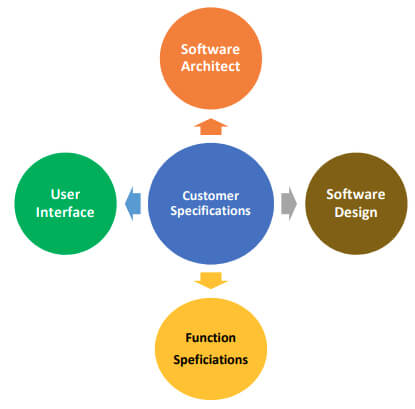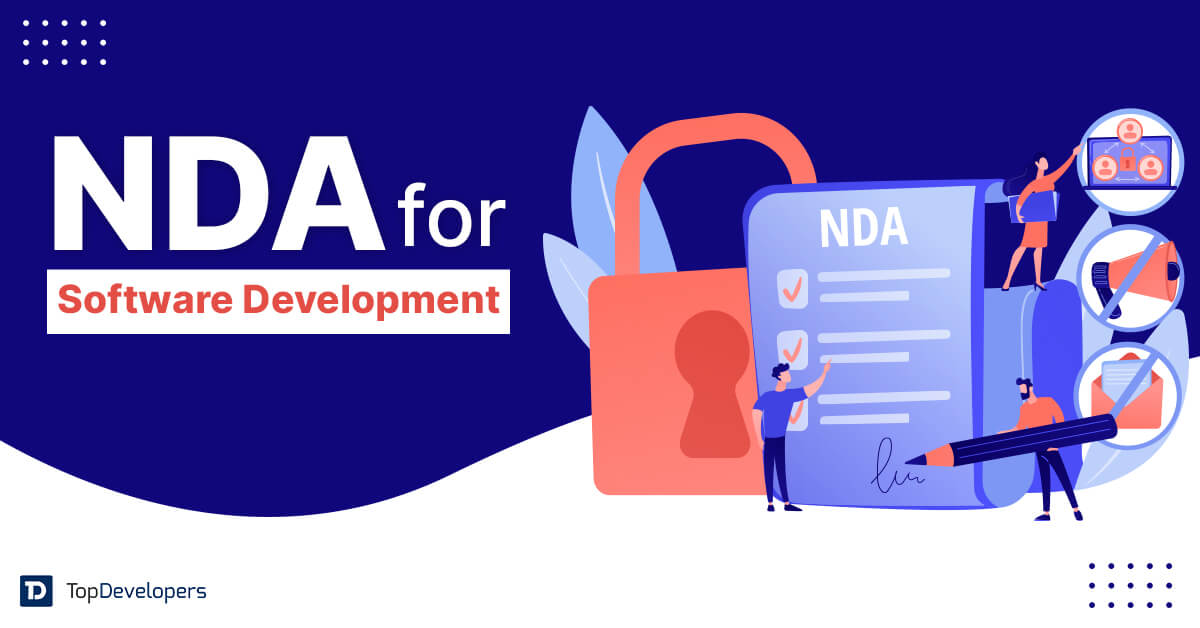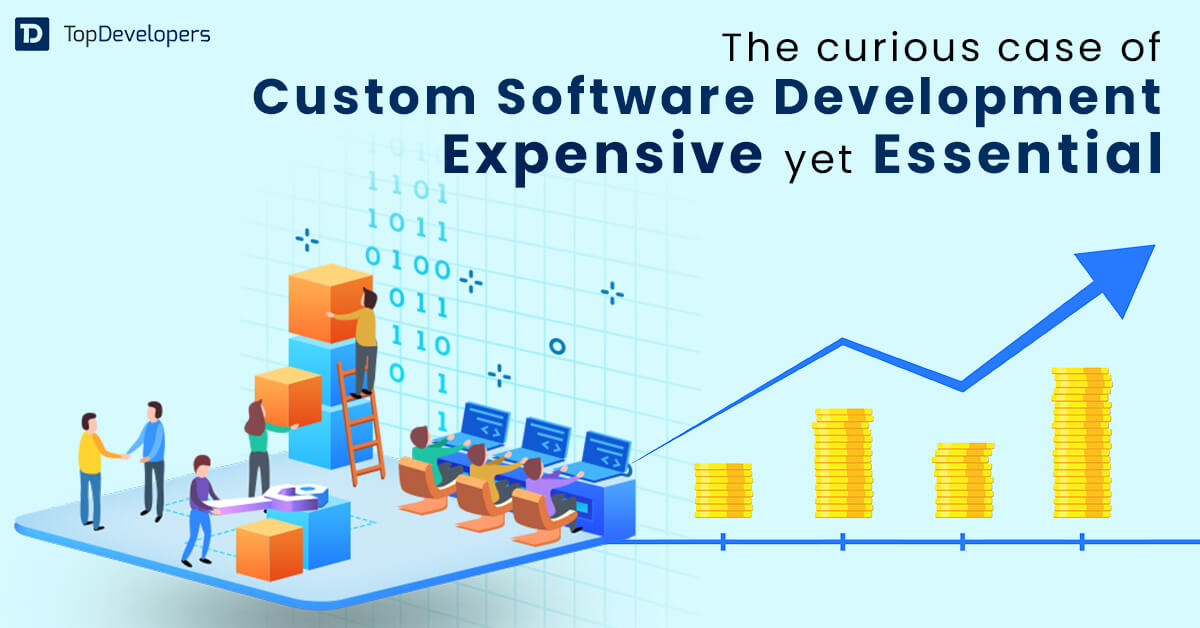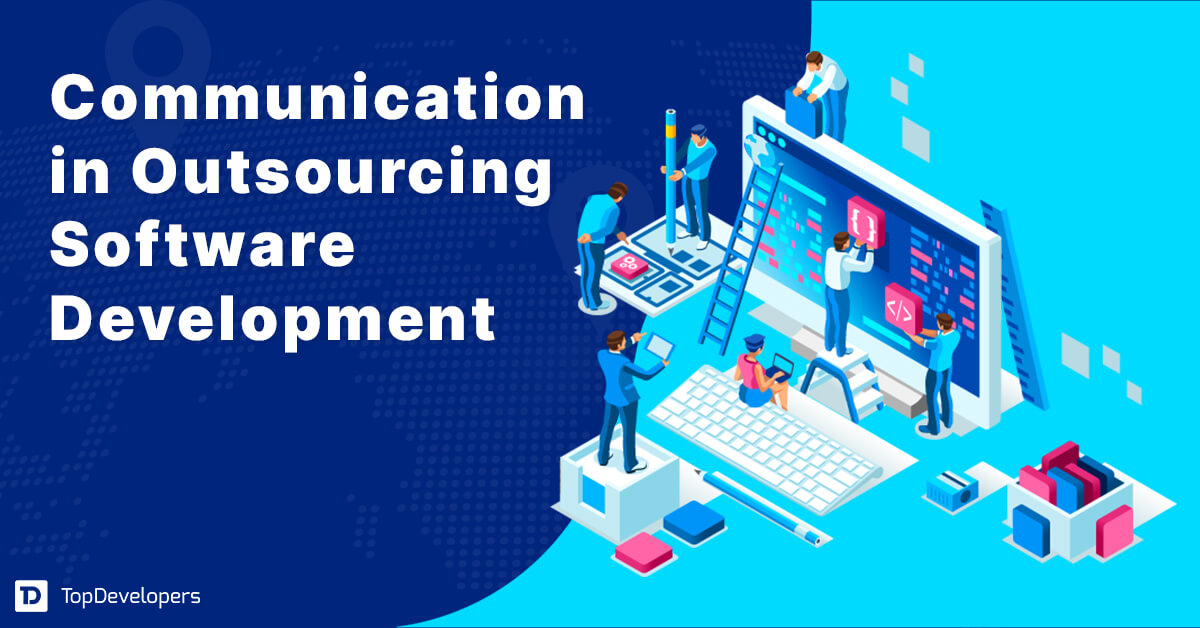
The digitalization of almost every business process and operation simply mean that everything today has a software tool and is automated in one or the other way. Whether you are selling software to clients or getting them developed to run your own businesses, you cannot simply avoid the software development life cycle (SDLC).
For buyers and software development companies, the requirement phase of SDLC holds paramount importance as this is the phase where the foundation of the software is not just outlined but also detailed.
Table of Contents
What is the requirement phase of SDLC?
The requirement phase is where you build the base of your software. Before you shortlist software development companies, it is important to work on the requirement phase because by looking at this important document and work, the dedicated software development team shall come to know what they will be working on. Without the requirement phase documentation, even the best offshore software development company will get confused about their task.
Firstly, you need to list down the business needs you expect from the customized software to address. In other words, it is what you expect from the remote software development team to work on. For instance,
- Who are your targeted users
- What do they expect
- What pain area you are concerned about
- What are the issues they face
- How would your software solve them, and finally,
- How would the software function
Once you make the list of all business needs, the dedicated software development teams and other senior members from the management teams go through it to discuss it thoroughly. Then, they finalize the list by analyzing each item and considering its feasibility.
Upon deciding the feasibility and approving it, the list is then passed on to the other team such as designing. The design team puts their own requirements by looking at the features required from the client side.
All in all, every team and a team member shall go through the requirement phase documentation to have their two cents in it that would ultimately contribute to software development speed because everybody is familiar with the common goal.
Who is involved in the SDLC requirement phase?
Ideally, every person who is likely to be associated with the software development process shall look into the matter of the SDLC requirement phase; nevertheless, it depends and varies from a software development company to company and the hierarchy they have in their organization.
The importance of the requirement phase in the software development life cycle
The biggest yet commonest bone of contention in most software development outsourcing is the difference or gap between what was expected and what was delivered. To buyers, it is always ‘less’ and for the service providers, it is just ‘perfect’.
The reason is the misunderstanding that could be due to a communication gap or gloomy narration of business objectives conveyed. Ultimately, the buyers are left high and dry and there could be a negative impact on the custom software development firm’s reputation. Both parties will have to settle at some point by compromising their business and expectations.
With the requirement analysis phase in the software development life cycle in place, it is easier and a kind of foolproof agreement for both parties i.e., a service provider and a buyer that how the final software product is going to be. It is because, in the requirement phase, the documentation mentions reasonable product demands that meet the right technology stack, and dedicated software developers shall work on predefined conditions and scopes.
The process of requirement analysis in software development
For any software development life cycle (SDLC), the requirement phase is the first step toward unambiguity. It is an essential step because it reverberates with acceptance tests which are crucial for the end user acceptance. Here is the complete process of the requirement analysis and gathering phase of SDLC –
Requirement gathering
Also known as elicitation, software development requirements gathering is followed by an analysis of the needs so that the technology experts shall go for feasibility tests and may alter some objectives to convert the thoughts into a real product.
The gathering technique involves precise research on what customers need. Nevertheless, it is not possible to put a survey questionnaire to each customer and get feedback; hence, the requirement for product, tool, or objectives is asked to the stakeholders who influence the product or who are well acquainted with the end users.
The stakeholders could be software quality engineers or at times even the third-party agencies or vendors who help you build the project requirements. In addition, you can also involve software developers or programmers and project managers with vast experience with a similar product.
Alternatively, some enterprises with a better budget may also opt for hiring domain experts from a particular industry in which the software product is going to be built. And for that having knowledge about software development would be beneficial.
Another good software development methodology to gather requirements for the software development life cycle is to take valid and tangible references from the use cases. However, it is important to note that use cases may not give you an idea about how software shall work on user input; instead, it just shows you what’s expected of user inputs.
On the other hand, many experts opine that adding security tasks during the requirement phase is fruitful rather than depending on insecure code from the software that is already developed.
Analysis of requirement gathering
Once the requirement gathering for the software development life cycle is completed, the team members and other associates perform brainstorming so that the feasibility study and course of action can be performed. All the issues and ambiguities are cleared by experts to make the analysis thorough. The analysis phase holds its own importance in the requirement phase of SDLC due to following reasons –
- Customers’ views are possible to consider and review
- The buyers’ view on customers’ feedback could be different; the software developer programmers can evaluate it further to make it technically possible
- The analysis in the early stage shall help everyone involved in SDLC have a clear idea about how the product will take shape
- Clarity is the key to success – with this analysis, all are on the same board
Analysis documentation
What is analyzed should be documented in an unambiguous way. Several types of requirements are carried out from the SDLC requirement analysis. Let us see a few of them.
The customer specifications stay in the center because the rest are subordinates to the main factor.
Customer specifications: Here, the specifications of the end-users or customers are specified and analyzed. It is important to get along with each need and make the stakeholders understand the importance of customer feedback in thriving the business.
Software architecture: The requirement of software architecture in the steps of SDLC includes mentioning various layers of application services along with operating systems and entire architectural infrastructure.
Software design: The design phases of SDLC shall mention every component that majorly affects the overall software design in terms of the user interface. The design shall mention UI and its impact on UX (User Experience). The design is carefully studied and finalized because it is the one that shall carry the product’s success.
Function requirement: Directly derived from the customer’s feedback or specifications, the functional requirements give the stakeholders a clear view and idea about how functions shall drive the software further in the use.
User interface: This specific requirement outlines the user interface which is the face of the software tool. Such requirements are recorded in the software development requirements management tools. You may take a readymade professional tool (as offered by IBM) or alternatively can develop your own customized tool to save money.
Converting business objectives into software features
The business requirements are typically customer-centric i.e., what target customers want. They are commercially driven goals where enterprises focus completely on growing their business through high customer satisfying features and rewards.
Nevertheless, when business requirements are to be converted into software requirements, there is a technical barrier, or what we can say is technical limitations. Hence, the business objectives are broken down into various components and their technical specifications and approach is thought out thoroughly. This process is carried out by following simple steps –
- Breaking the customer-specific business objectives into a detailed user story
- Designing a flowchart that shows various actions required to fulfill the objectives
- Providing technical specifications and conditions to fulfill each objective or story
- Carrying out wireframes and diagrams to assure a smooth and unambiguous workflow of various components and milestones
- Defining and separating the non-functional requirements from the business specifications or objectives
How should it end?
Software development requirements analysis is the heart of any SDLC model and therefore, it is important not to miss any concern or issue raised during the requirement phase building. If you miss it, it shall cost you an arm and a leg during the development process of software.
 Avantika Shergil
| Aug 24, 2022
Avantika Shergil
| Aug 24, 2022
Avantika Shergil is a technology enthusiast and thought leader with deep expertise in software development and web technologies. With over 8 years of experience analyzing and evaluating cutting-edge digital solutions, Avantika has a knack for demystifying complex tech trends. Her insights into modern programming frameworks, system architecture, and web innovation have empowered businesses to make informed decisions in the ever-evolving tech landscape. Avantika is passionate about bridging the gap between technology and business strategy, helping businesses build customized software and website, and understand about different tools to leverage effectively for their ventures. Explore her work for a unique perspective on the future of digital innovation.







